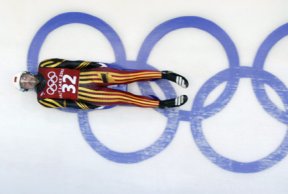
Luge racing. What were they thinking?
“What lies behind us and what lies before us are tiny matters compared to what lies within us.”
Ralph Waldo EmersonThe sport of Luge racing is not for the weak of heart. Imagine lying on your back and hurtling down an ice covered track on a very small sled. If that wouldn’t get a persons blood flowing, nothing would.
The French word for sled, the luge has been around for a long time. Ancient artifacts dug up in the Viking area of Oslo Norway indicate that the luge has been with us for at least 1,300 years. The Viking luge had two runners similar to ours of today.
This is a photo of Davos, Switzerland, with an ice arena and an outdoor speed racing track.
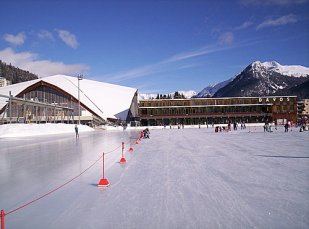
In Davos, Switzerland the first international luge races were held. Racers came from all over including Australia, United states, Germany and Sweden. A total of 21 competitors in all. The race took place over 4 km on a natural ice track and the winner was George Robertson who was, would you believe, from Australia. He tied with a postman from Klosters by the name of Peter Minsch. Klosters is only a few kilometers from Davos.
In 1955 the first world Championships were held in Oslo, Norway on an artificial track. In 1957 the Luge Federation (FIL) was founded and is still the governing body of the sport of Luge Racing. The Luge made it’s way into the Olympics at Lake Placid in 1964.
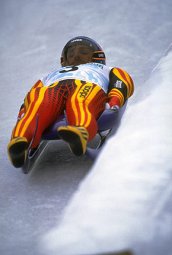
In the singles races for men and women, athletes make four runs down to the bottom of the track. Each run counts. The times are all added together and the fastest total time is the winner. The races are held over two days with two runs each day. The women start area is lower down on the course for a shorter run distance.
The four run competition is to reward consistency and to measure the stamina under pressure when the chips are down, especially on the second day.This format is unique to the Olympics.
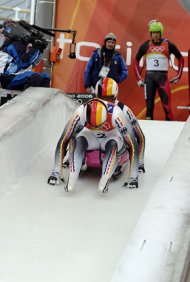
Doubles
This is the ultimate depiction of the expression “up close and comfortable”. The doubles luge racing competition is run on the same day with each team running two runs. Each run counts, and times are added with the fastest total time the winner. This is not unique to the Olympics, as this format is used on world Championships and the world Cup races as well.
The Olympic rules do not stipulate that the doubles team must be of the same sex, but over the years it has been a tradition that men have ridden together. Generally the larger person is on top for greater aerodynamics.
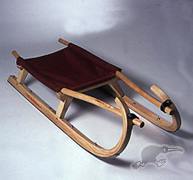 Luge
Luge
This is a typical luge by Gasser Rodel from Austria.
It is a professional luge made of ash with hand ground, cut steel rails and plastic coated canvas seating. This type of luge is easy to control due to the suspension design.
It weighs only 7 kg (15.5 pounds).
Black ash is an extremely strong wood with a course grain with good elasticity . Perfect for luge racing frames.
For all of the events check out these Olympic sports events.
Speed skating Power and agility on skates.
Figure Skating Beauty and grace on ice.
Alpine skiing. Racing the clock.
Bobsleds. see how they are constructed.
Bobsledding. Breakneck speed on solid ice.
Nordic skiing. Exciting races on skinny skis.
Biathlon Nordic skiing and rifle shooting combination.
Curling. The ancient game just gets better.
Hockey High flying teamwork in action.
Ski Jumping.Soaring through the air like a bird.
Return from Luge Racing to Whistler Outdoors



